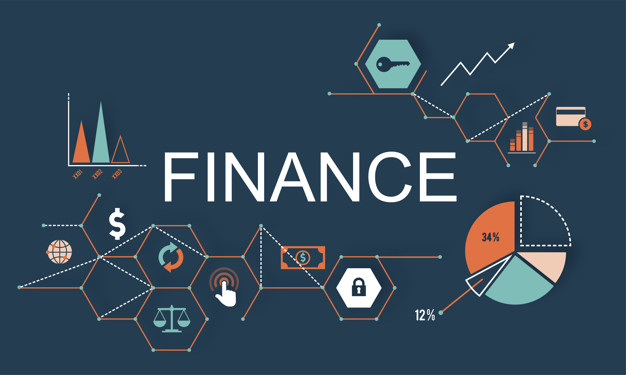
Eden
Oct 25, 2021 14:06

OPEC
The Organization of the Petroleum Exporting Countries (OPEC) is a permanent, intergovernmental Organization created at the Baghdad Conference on September 10–14, 1960, by Iran, Iraq, Kuwait, Saudi Arabia, Venezuela.
Before the OPEC, the Seven Sisters (E Anglo-Iranian Oil Company, Gulf Oil, Royal Dutch Shell, Chevron, ExxonMobil, Socony, Standard Oil Company of New York, and Texaco) controlled the world's oil markets.
In the 1950s, coal was the most critical fuel globally, but oil consumption increased rapidly, and demand continued to grow. In 1959, the United States' Seven Sisters lowered the price of oil produced in Venezuela and the Middle East by 10% to reduce the United States' price.
To counter the U.S. oil monopoly, OPEC was born.

OPEC's 13 members control approximately 30% of global oil supplies and 79.4% of proven reserves. OPEC member nations produce about 42% of the world's crude oil, and OPEC's oil exports account for roughly 60% of the total petroleum traded worldwide.
OPEC+, which is the amalgamation of OPEC and non-OPEC nations like Russia, Mexico and Kazakhstan, controls over 50 percent of global oil supplies and about 90 percent of proven reserves.
OPEC+ member countries collectively agree on how much oil to produce, which directly impacts the ready supply of crude oil in the global market at any given time.
If OPEC+ countries are unsatisfied with the price of oil, it is in their interests to cut the supply of oil so prices rise. However, no individual country actually wants to reduce supply, as this would mean reduced revenues. Ideally, they want the price of oil to rise while they increase supply so that revenues also rise. But that is not market dynamics. A pledge by OPEC+ to cut supply causes an immediate spike in the price of oil.
Conversely, OPEC+ can decide to boost supply.
Saudi Arabia and Russia, the two largest oil exporters in the world who both have the ability to increase production, are big proponents of increasing supply as that would increase their revenues. However, other nations, who cannot ramp up production, either because they are operating at full capacity or are otherwise not allowed to, would be opposed to this.
In the end, the forces of supply and demand determine the price equilibrium, although OPEC+ announcements can temporarily affect the price of oil by altering expectations.
IEA
The International Energy Agency (IEA) is an international intergovernmental organization that was established in 1974, following the 1973 oil crisis, the IEA's original mission was to help prevent any large-scale disruptions in the international supply of oil, as well as to serve as a venue for international research and collaboration related to energy security issues more generally.

One of the flagship programs of the IEA has been the International Energy Program, according to which its members agree to withhold large stocks of oil in order to respond to any future unforeseen disruption in the oil supply.
Under this agreement, IEA member nations are required to store the equivalent of at least 90 days' worth of oil, measured according to their previous year's net oil imports.
In the event of a sudden disruption to supply, the IEA can help coordinate among its member nations, who could increase supply by releasing some of their oil reserves.
Other measures that the IEA can take to help restore supply include advising on interventions such as fuel rationing, public relations, and outreach to encourage lighter fuel use, driving restrictions, and the coordination of efforts to bring additional fuel production facilities online.
EIA
U.S. Energy Information Administration (EIA) is an independent, impartial organization that "collects, analyzes, and disseminates energy information in the U.S. to promote sound policymaking, efficient markets, and public understanding of energy and its interaction with the economy and the environment." It is the government authority for energy statistics. Unlike the API, the EIA does not actively lobby for any policy changes.

The EIA publishes its Weekly Petroleum Status Report on Wednesdays at 10:30 a.m. Eastern Time, but after a Monday holiday, it is released on Thursday. The EIA report provides information on the supply of oil and the level of inventories of crude oil and refined products. The report contains many different sections on many different products broken down by regions, prices, estimates, and stocks.
The EIA requires major oil companies to complete their oil inventory surveys and includes a stern disclosure for noncompliance or intentional wrongdoing. There are civil penalties for failure to file accurate and timely data.
API
The American Petroleum Institute (API) is the largest U.S. trade association for the oil and natural gas industry. API was founded on 20 March 1919 and based in New York City.

Since 1929, the API has produced the Weekly Statistical Bulletin. This report contains a multitude of information, reporting on "total U.S. Crude and regional crude inventories and data related to refinery operations, as well as the production, imports, and inventories of the four major petroleum products: motor gasoline, kerosene jet fuel, distillate fuel oil, and residual fuel oil." The products listed account for more than 80% of the total refinery production.
The American Petroleum Institute collects the data "at-will" from members and non-members. Typically the data sent to the EIA is also sent as a duplicate to the API, utilizing the same forms. According to the API, both agencies confirm that the weekly data they receive accounts for approximately 90% of the industry. Both agencies estimate the remainder of the 10%.The stern disclosures that the EIA data includes have led analysts and traders to believe that the EIA's data is more accurate than the API's.
The API data is often seen as a prelude to the EIA data, as it's released on the evening before the EIA report. There is a relationship between the two data sets. The API claims that "the monthly estimates are within 1% of each other, about 81% of the time."
The Weekly Statistical Bulletin report is released every Tuesday at 4:30 p.m. Eastern Time. If the Monday before is a Federal holiday, the report is released on Wednesday.
API data can show the economic conditions of countries consuming crude oil-related products, and it will also have a one-value impact on the U.S. dollar. According to statistics, the co-directional rate of API and EIA is as high as 81%, so it is hailed as the most reliable forecast data of EIA.
EIA data mainly shows the number of crude oil inventories in the United States for the week, which directly reflects the supply and demand of crude oil. Therefore, it has a significant impact on oil prices and crude oil futures, spot crude oil, fuel oil such as gasoline, diesel, and emerging spot asphalt. The dollar index and related exchange rates will also be affected.
Compared with the EIA crude oil data, after the API data is released, due to the late release time, the oil market is in the suspension stage, and the fluctuation of oil prices will be relatively small. Do not rely too much on the API crude oil data in operation or use EIA crude oil data, as the basis is more reliable.


Oct 25, 2021 14:06